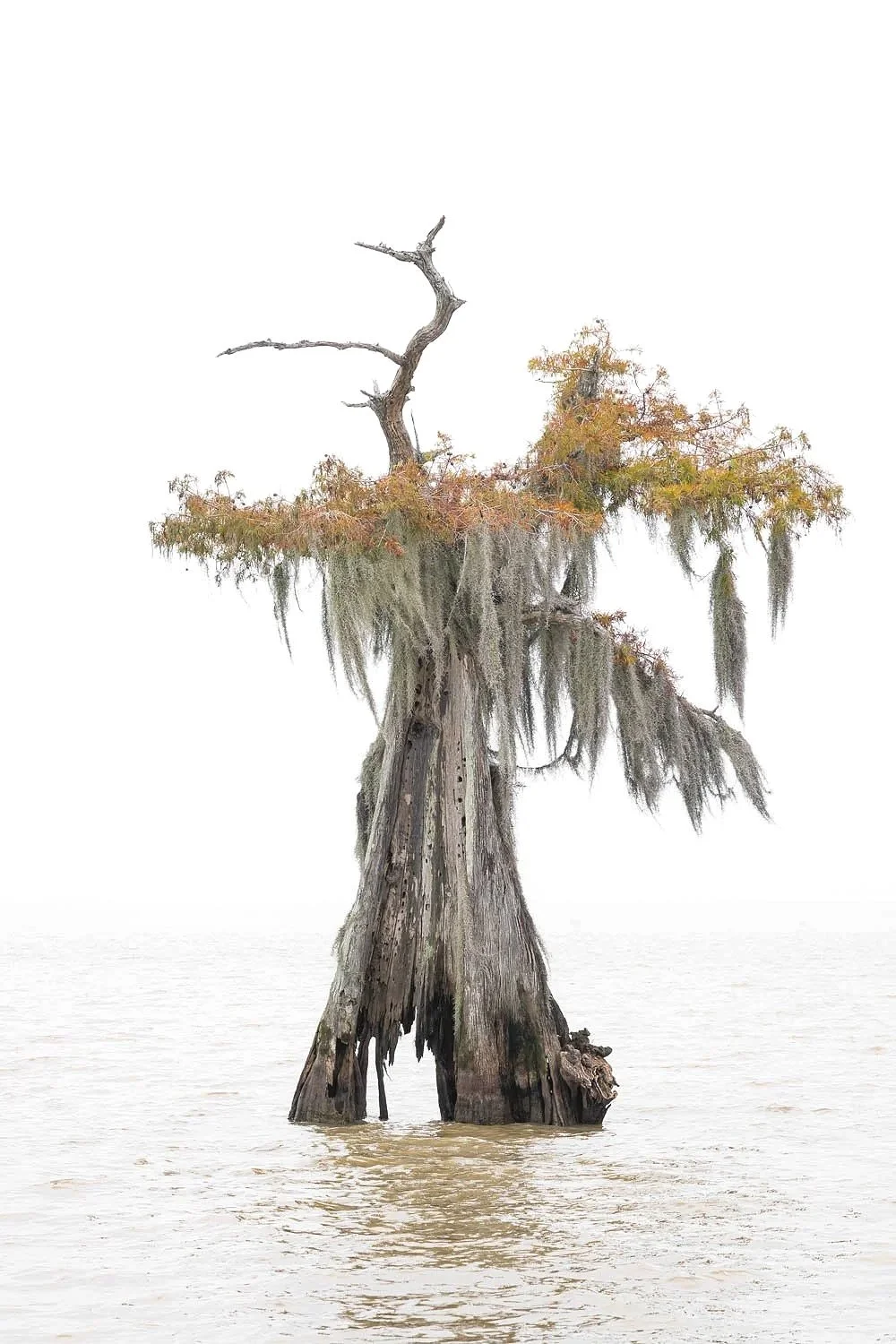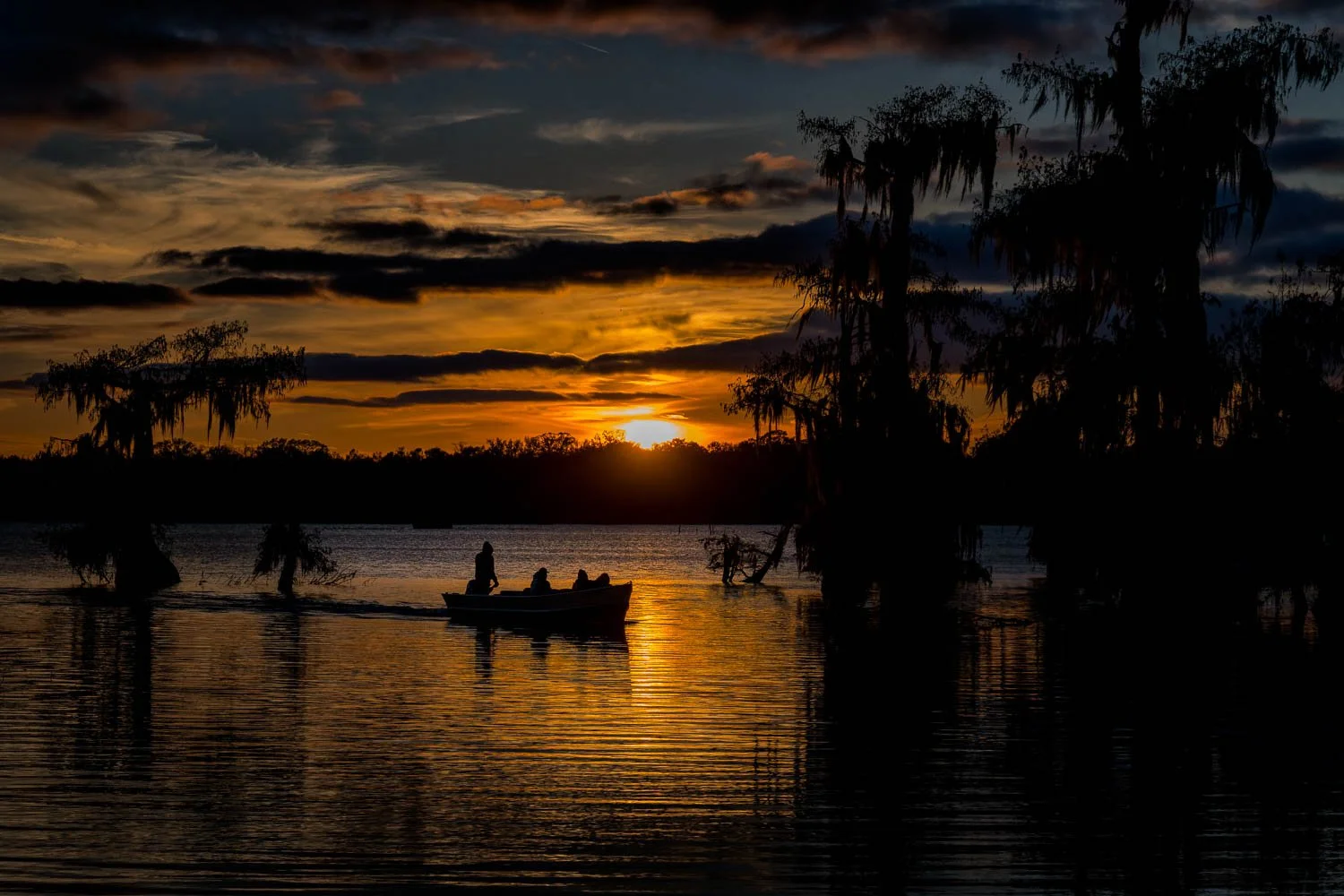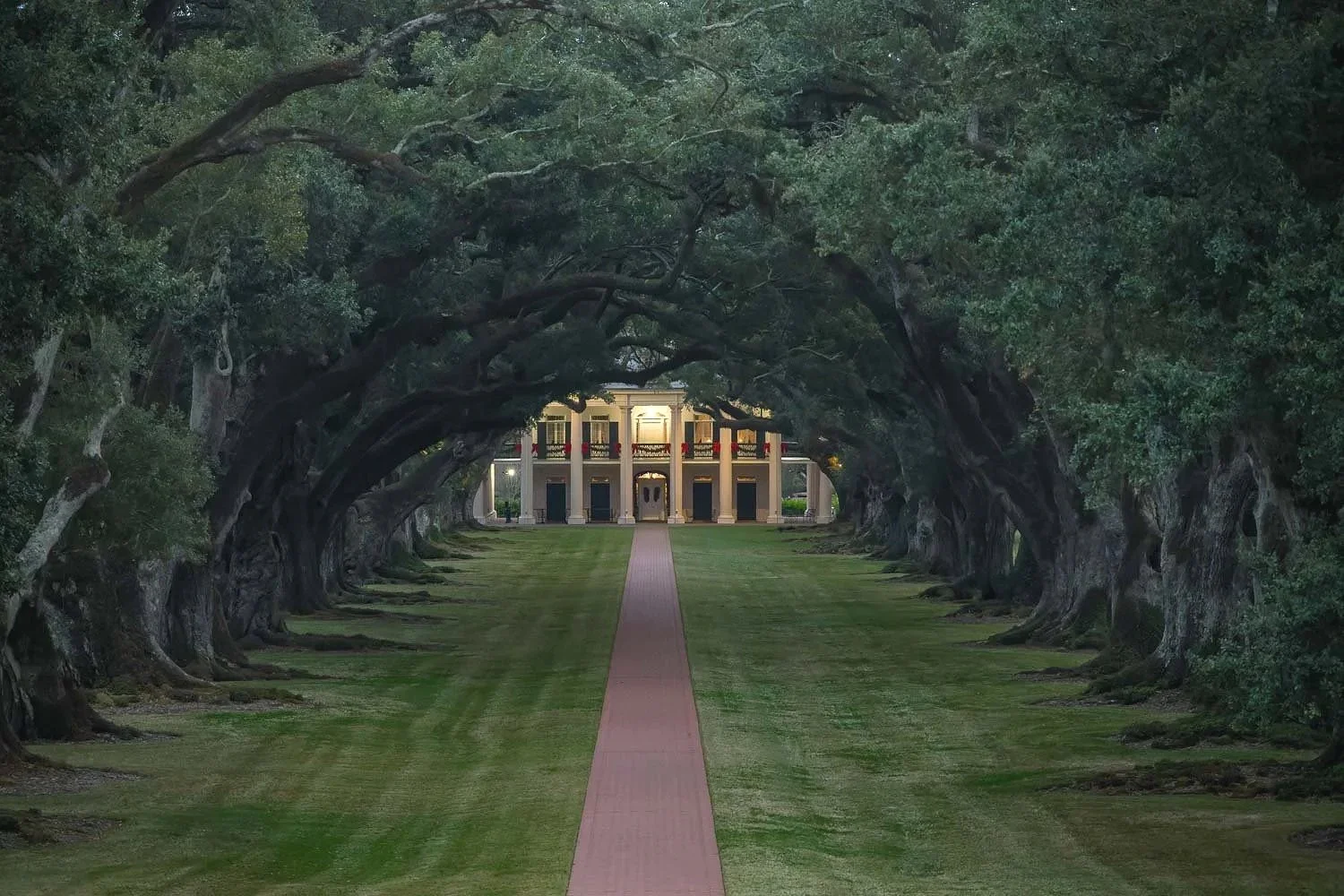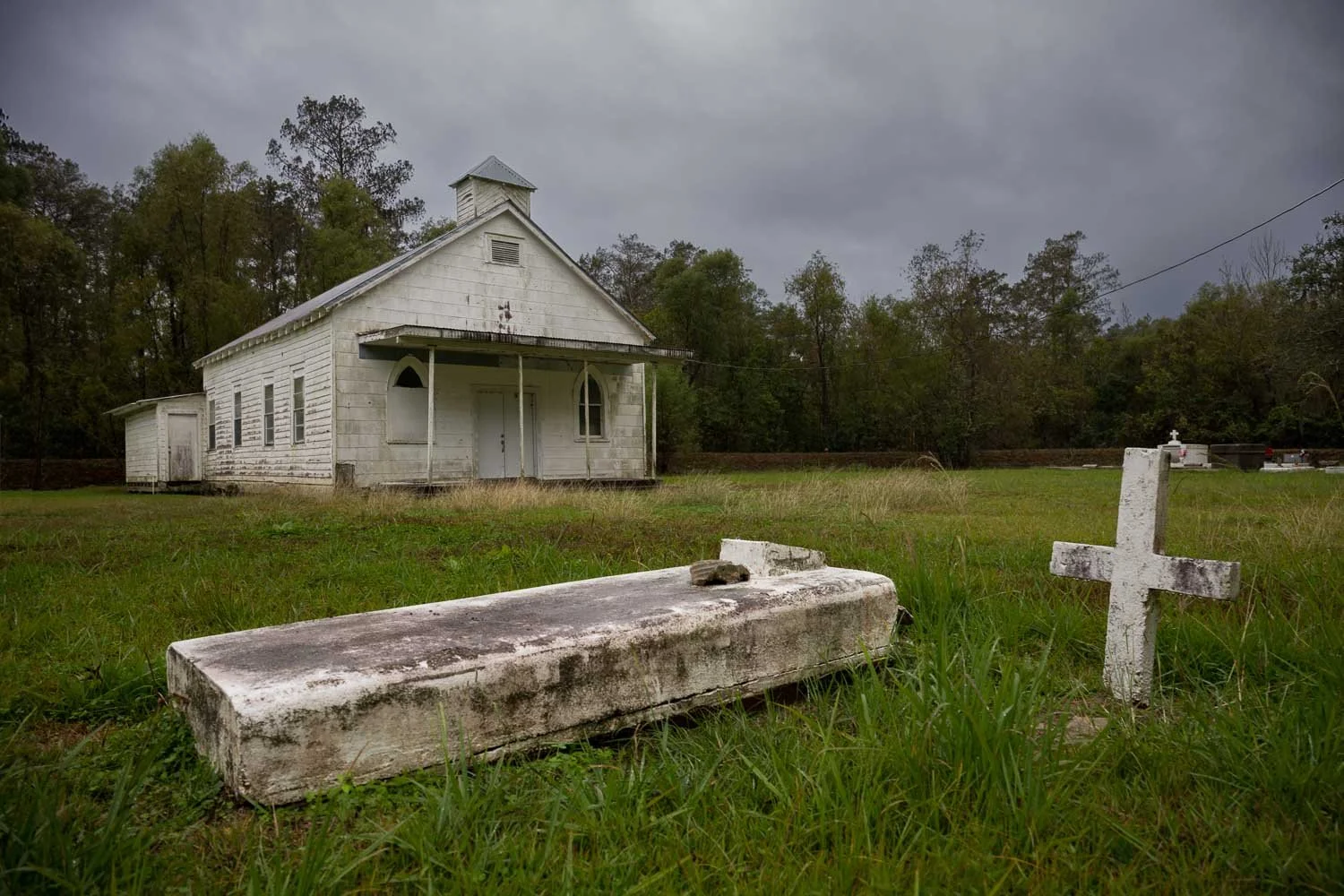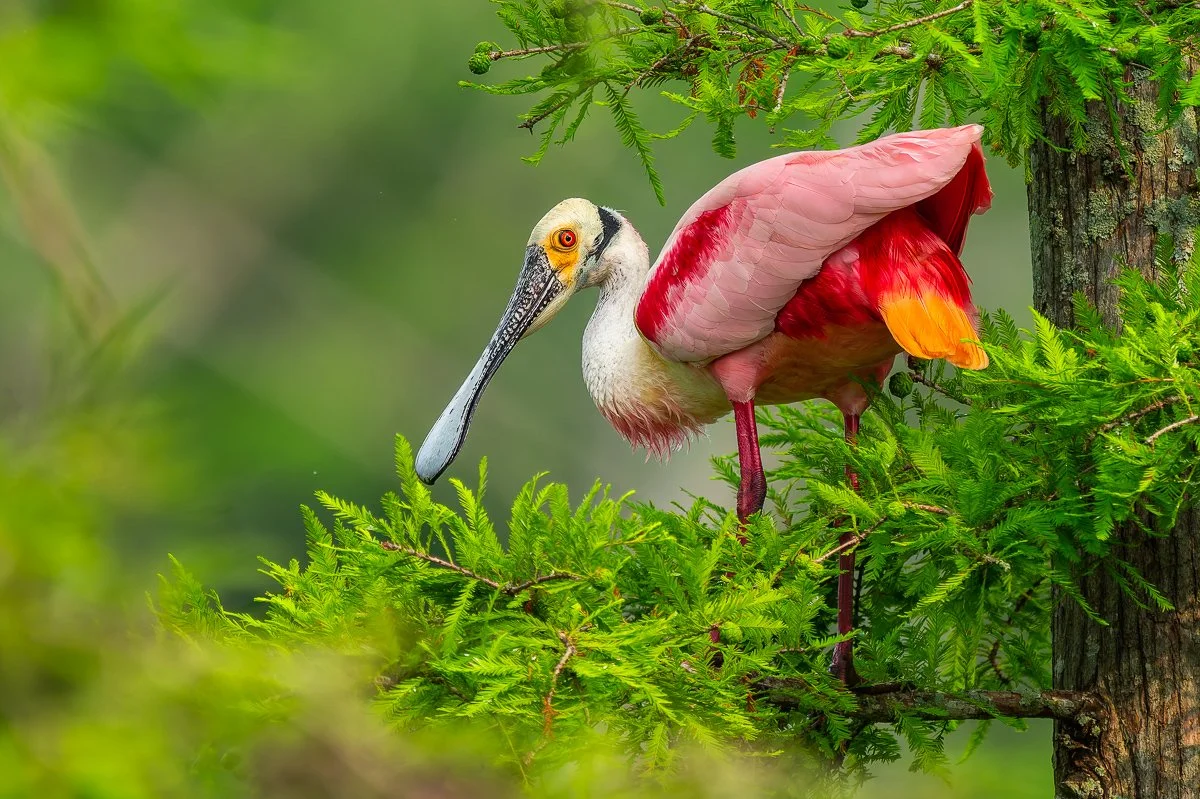Louisiana Cypress Swamp Photography Tours 2026 Updates
Announcing Fall 2026 Tours + Spring 2026 Openings
Cypress from 2025 December Tour
The Louisiana cypress swamp photography tours for Fall 2026 are now officially open, and I’m pleased to share that all three Spring 2026 tours also have availability again, thanks to the expanded boat capacity. For the first time in a long while, I can now host up to five photographers on both Fall and Spring tours—without crowding or compromising shooting space.
Also, space is available for the Spring 2026 Tours as well.
Purple Gallinule at Miller’s Lake–Spring 2025
Before we dive into the details, here are the quick links:
👉 Fall 2026 Tour Details & Booking
👉 Spring 2026 Tour Details & Booking
Repeat customers or those familiar with the tours may book here now?
Fall
👉 Book November 15th 2026 Tour Now
👉 Book November 30th 2026 Tour Now
Spring
👉 Book April 19, 2026 Tour Now
👉 Book May 17th, 2026 Tour Now
👉 Book May 17th, 2026 Tour Now
This increased capacity gives everyone more freedom to work compositions, shift position as the light changes, and really settle into photographing these quiet, old-growth cypress environments.
Fall 2026 Louisiana Cypress Swamp Photography Tour Dates
November 15–18, 2026
November 30–December 3, 2026
Fall is peak season for foggy mornings, rust-colored cypress foliage, and calm water that produces beautiful reflections. These tours take place in remote locations that remain quiet and largely untouched by other groups.
Small Groups, More Space, Better Angles
I’m using another tour operator, and his boat layout allows every photographer comfortable shooting room from either side, clear communication, and better positioning for stronger compositions. This improved setup applies to both Fall and Spring tours going forward.
If Fall fog and reflections—or Spring bird photography—are on your 2026 list, I’d love to have you join me.
Highlights from the December 2025 Photo Tour
Opening Reflections
Cypress Trees in the Fog at Lake Fausse Pointe
December photo tours are always a little unpredictable, and this year was no exception. Overcast light, pockets of fog, and a few well‑timed breaks in the weather gave us a beautifully varied set of shooting conditions across four days. From massive cypress silhouettes at Lake Fausse Pointe to the soft glow of Christmas lights at Oak Alley, this tour delivered a rich mix of scenery, quiet moments, and images our group was genuinely proud of.
Below is a day‑by‑day look at what we experienced, along with still photographs and a slideshow video capturing some of the best moments.
Day 1 – Lake Fausse Pointe in Moody Overcast Light
December Cypress Scene–Lake Dauterive
The tour began at Lake Fausse Pointe on December 1st under a thick blanket of overcast skies—ideal for photographing the massive cypress trees along the lake’s south side. Soft, even light brought out details in the trunks and hanging moss, and the lake stayed calm for most of our four‑hour session.
We returned to our accommodations around 3 p.m., just as the rain set in, giving us a welcome early evening to rest, review images, and prepare for the next day.
Day 2 – Lake Dauterive and a Sunset Finish at Lake Martin
Lone Cypress at Lake Dauterive
The morning of December 2nd took us to Lake Dauterive. Once again, we were met with overcast skies—perfect conditions for isolating cypress forms and reflections without harsh contrast.
After a midday break, we headed to Lake Martin for sunset. Even with clouds lingering, the sky opened enough to create color and depth on the water, giving us a strong finish to the day.
Susnet at Lake Martin
Day 3 – Fog at Fausse Pointe & Christmas Lights at Oak Alley
Colorful Cypress At Lake Fausse Pointe
December 3rd gave us the kind of morning photographers dream about. Light fog drifted across Lake Fausse Pointe, wrapping the cypress trees in layers of atmosphere. It was our most productive morning of the tour, with everyone coming away with portfolio‑worthy frames.
That afternoon we made a special trip to my hometown, Houma, before heading to Oak Alley Plantation. We photographed the historic home at dusk as its Christmas lights began to glow—an elegant contrast to the quiet swamp scenes earlier in the day.
Day 4 – Terrebonne & St. Mary Parishes
Oak Alley Plantation with Christmas Lights
On the final morning, we explored locations in Terrebonne and St. Mary Parishes, photographing until rain brought the session to an early close. Even with the shortened day, we ended the tour with a diverse set of images spanning cypress wetlands, lakes, plantations, and low‑country scenery.
Church along Deadwood Road in Terrerrebonne Parish
Slideshow Video
Instead of embedding the movie in the email version, we’ll link directly to the slideshow so it loads quickly and avoids email‑client playback issues.
View the full slideshow here → Fall Tour Slideshow
Final Thoughts
Every December tour is different, but what stays constant is the quiet beauty of Louisiana’s cypress country. Overcast skies gave us color and contrast; fog gave us atmosphere; and each location added its own character to the week. I’m grateful to everyone who joined me, and I’m looking forward to sharing more opportunities like this in upcoming tours.
If you’re considering a future Louisiana Cypress Photo Tour, keep an eye out for upcoming dates—or reach out if you’d like to join the next adventure.
Charles Bush Photography – November 2025 Newsletter
Introduction
As we roll into late fall here in Louisiana, I’m wrapping up the last of my 2025 tours, refining new Nikon Z8 articles, and continuing to build out resources to help you get the most out of your photography. Below you’ll find the final call for this year’s Fall Cypress Swamp Tour, spring updates, and a few guides you may want to bookmark.
🌅 Last Chance: Final 2025 Fall Cypress Swamp Tour
This is the last Fall Cypress Swamp Photo Tour of the year, and it’s shaping up beautifully. Golden backlight, deep color, and still water are lining up perfectly.
Choose the option that fits your schedule:
3‑Day Fall Cypress Tour
6‑Day Fall Cypress Tour
Both offer:
Very small groups
Private boat access
Ideal light positioning and decades of local knowledge
👉 Reserve your Fall Tour spot — last chance for 2025.**
🐦 Spring 2026 Bird Photo Tours
Spring in Louisiana is the peak season for action-packed bird photography. Spoonbills, egrets, herons, and nesting behaviors make it one of the most productive times of the year.
For 2026, all Spring Tours are 3‑day sessions, designed for maximum photographic productivity.
Locations include:
Cazan Lake
Miller’s Lake
I’ve photographed Spoonbills here for 22 years, and every spring delivers consistent opportunities.
👉 Book your Spring 2026 Tour spot before the remaining seats fill.**
📘 New Nikon Z8 Articles & Resources
I’ve created a dedicated hub for all Nikon Z8 articles, tutorials, and setup guides. It’s the fastest way to find everything in one place, especially my deep-dive updates on firmware v3.
👉 Visit the Nikon Z8 Article Page
If you own the Z8, this is one to bookmark.
🌿 Spring Photo Subjects Guide
Spring in Louisiana offers a wider variety of bird species and behaviors than most visitors expect. I recently published a dedicated page covering the most common subjects we encounter across all three spring months.
Inside you’ll find:
Month-by-month subject expectations
Behavior opportunities
Recommended focal lengths
Sample images
👉 Read the Spring Photo Subjects Page
Keywords
#fallphototour #louisianaphototour #birdphotographytour #springbirding #nikonz8 #z8setup #cypressswampphotography #roseatespoonbills #wildlifephotographyresources


